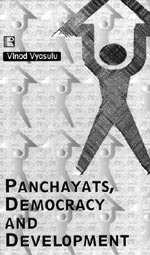Book review: Panchayats, democracy and development
Book review: Panchayats, democracy and development

Panchayats, Democracy and Development . By Vinod Vyasulu . Rawat Publications, Jaipur and New Delhi, 2003 . 195 pages . Rs 395
In 1992 the Indian Parliament approved of the 73rd constitutional amendment, which made it mandatory for state governments to devolve powers to local bodies. More than a decade later, Vinod Vyasulu, director, Centre for Budget and Policy Studies, Bangalore and a longtime observer of panchayati raj institutions (pris), reviews this decade in Karnataka, also presenting Madhya Pradesh and Uttar Pradesh as case studies.
Vyasulu starts anecdotally. There is a "typical project' to implement a poverty alleviation programme for an international donor. In its zeal for change, the project team involves pris as just one stakeholder among many. Such approaches are reductive, for "local government, the panchayat system, is the state, in all its majesty'. Vyasulu emphasises that pris are primarily a political institution. However new, whatever the convulsions they face, they are legitimate government at the local level and cannot be ignored by grassroot development projects.
Vyasulu then reviews the state of affairs in Karnataka, which he says was the harbinger of decentralised rule. The state's experiment with local bodies started in the 1960s; in 1983 a new law was passed that began to be implemented from 1987. The zilla panchayat head was given the status of a minister of state; he had control over the chief secretary of the district (an ias officer). Vyasulu laments that today the power local bodies possess remains on paper. Local governments atually have no control over the district bureaucracy and this makes pris shaky. The head of the zilla panchayat continues to be an employee of the state government, with the power to merely refer to the state government those decisions the zilla panchayat feels are not in tune with the law.
Vyasulu dissects the financial functioning of pris with precision. Not only do panchayats lack flexibility in deciding the heads of expenditure (most funds are







